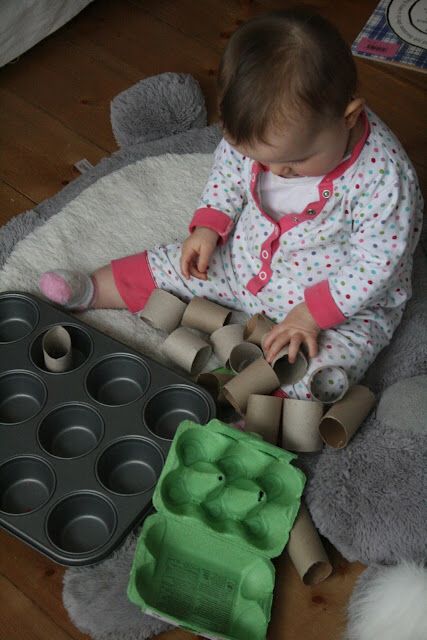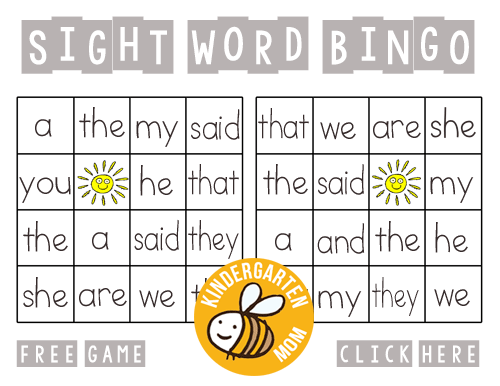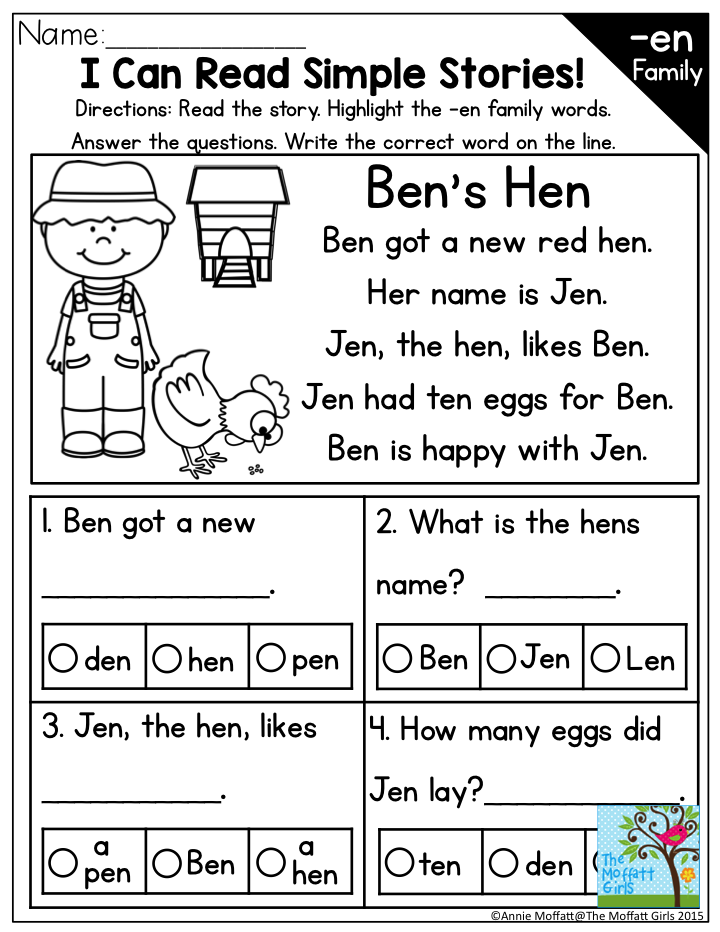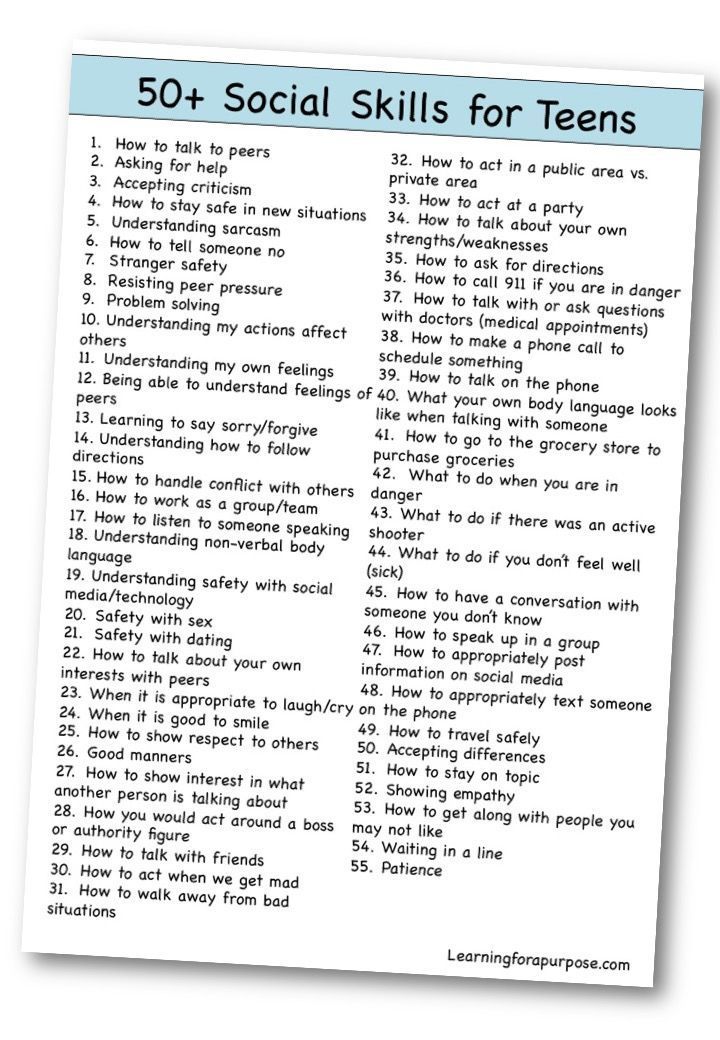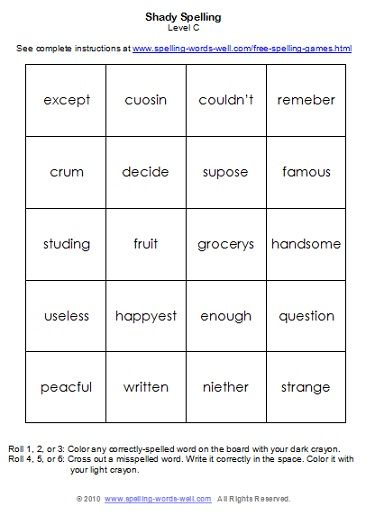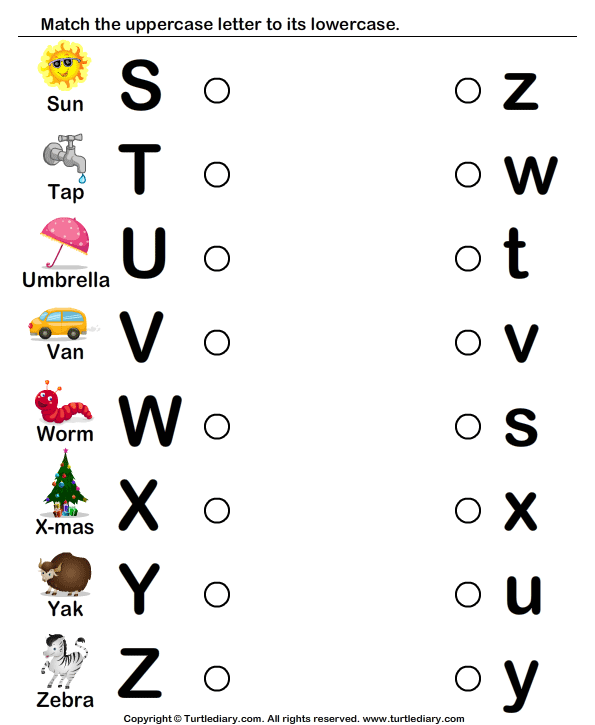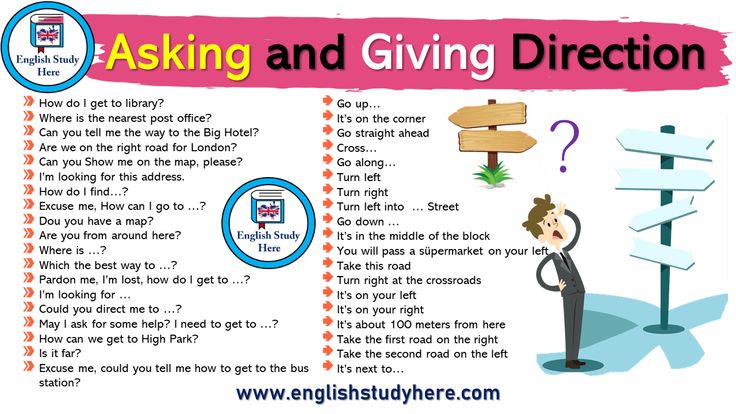Games to play with five year olds
25 Fun and Inventive Games for Five-Year-Olds
// by Seda Unlucay
By age five, most children are able to form complex sentences and understand jokes more easily. They may be able to read independently, play group sports, and are eager to share all that they are learning with others.
This series of engaging family board games, messy and colorful crafts, literacy and numeracy activities, and fun physical challenges will help strengthen their growing mental and physical abilities while improving their memory and attention spans.
1. Get Creative With Googly Eyes
Kids will love using googly eyes of various shapes and sizes to create their own unique animals and creatures, making for hours of fun craft time.
Learn more: Mess for Less
2. Try a STEM Challenge
These 4th grade STEM challenges are a great opportunity to develop problem-solving skills.
3. Make Your Own Kinetic Sand
Your young learner will love getting their hands dirty with this glittery and vibrant kinetic sand. After choosing the colors and mixing the ingredients, they are ready for tons of fun creating beautiful 3D art.
Learn more: Crafty Morning
4. Play a Game of Brain Freeze
Shop Now on Amazon
This cooperative board game is intended for 2-4 players and combines elements of Guess Who and Mastermind to create a unique game your five-year-old is sure to love. It's also a fun game for expanding attention spans and developing social skills.
5. Play a Game of Bubble Wrap Hopscotch
Kids are sure to love this game of hopscotch made out of bubble wrap. It's a kinesthetic way to develop math skills and a fun indoor physical activity for rainy days.
Learn more: Craftaphile
6.
 Have Fun with an Egg Decorating Craft
Have Fun with an Egg Decorating Craft After collecting a variety of loose parts such as gems, straws, buttons in bright colors, or wooden shapes, your five-year-old is sure to have tons of fun decorating their egg pattern mat.
Learn more: Picklebums
7. Play a Classic Game of Scrabble Junior
Like the adult version, this junior version of Scrabble builds familiarity with the alphabet, allows for plenty of practice forming sentences, and develops reading, writing, and reasoning skills.
Learn more: The Spruce Crafts
8. Try a Creative Matching Game
What better way to develop basic math skills than with some cookie fun? This is a great, hands-on activity for learning about 2D shapes. It is also a wonderful way to develop analytical thinking skills as learners are challenged to match each shape with its proper cookie piece.
Learn more: Teaching Mama
9.
 Play an Alphabet Phonics Hunt Game
Play an Alphabet Phonics Hunt Game
After placing each letter on an object in your house which begins with the corresponding letter sound, invite your preschooler to go on an exploratory phonics hunt. This is a terrific way to develop attention skills while strengthening spatial memory skills.
Learn more: Meaningful Mama
10. Play an Activity-Based Game of Animal Charades
Designed with colorful animal art, this simple game of charades is a fun way to incorporate physical activity into your child's day while letting their imaginations run wild!
Learn more: Buggy and Buddy
11. Play An Age Appropriate Board Game
Monopoly Junior is an iconic and award-winning board game for good reason. Like the adult version, this junior version is ideal for 2-4 players and incorporates a kid-friendly game board with places such as the Zoo and Ice Cream Parlour. It's an engaging way to teach basic math skills such as counting, organizing, and spending their earnings.
Learn more: Hasbro Shop
12. Play a Balancing Game
Five-year-olds will love walking on lines backward, straight, zig-zag or hopping. This simple outdoor game is also a great way to build motor coordination and balance skills while giving preschoolers a chance to come up with their own creative movements.
Learn more: Kinder Care
13. Play a Classic Card Game
Old Maid is an engaging game with simple rules that is excellent for building social development skills such as sharing, taking turns, and cooperative play.
Learn more: Kidspot
14. Bubble Wrap Body Slam
After wrapping your kids in bubble wrap, have them use their bodies to create art against a wall covered with a canvas. This is also a perfect game for testing their physical development and developing color knowledge.
Learn more: The Chaos and the Clutter
15. Have Fun With a Verbal Intelligence Game
Why not combine the fun of a treasure hunt with sight words? Your preschooler is sure to love hunting for the sight words hidden inside their rice-filled sensory bag. A great extension activity is to have them spell, write and repeat each word as they find it.
A great extension activity is to have them spell, write and repeat each word as they find it.
Learn more: Hands On As We Grow
16. Play an Educational Online Game
National Geographic has a whole host of educational online games to choose from. This leaf identification game is a creative way to incorporate the natural world into your science education.
Learn more: National Geographic Kids
17. Develop Reading and Writing Skills With Sight Words
Why not print out these core 100 sight words and practice creative ways to memorize them such as painting, looking for them in a book, or spelling them out with playdough? There's no better way to help your young learner develop the necessary reading and writing skills they will need for Kindergarten.
Learn more: Teaching Expertise
18. Number Bonds to 10 Egg Game
This educational matching game for children makes for a great way to practice math skills without pesky worksheets! It's a hands-on way to understand the concept of number bonds to ten.
Learn more: The Imagination Tree
19. Cutting Practice With a Princess Doll
Your young learner will get plenty of fine motor practice cutting and brushing this adorable doll's hair.
Learn more: Lalymom
20. Get Busy with a STEM Activity
This science investigation challenges learners to waterproof a boot. After coloring in the sheet, you can cover it with different materials and then spray each with water to discover which ones are actually waterproof.
Learn more: Science Sparks
21. Make a Bubble Wrap Salt Dough Heart Craft
This creative craft combines a bubble wrap texture with salt dough to create a beautiful heart decoration, gift, or keepsake.
Learn more: Red Ted Art
22. Sharpen Math Skills with an Egg Carton Flower Game
This fun matching game requires young learners to solve a series of additional problems and then find the flowers with the matching answer.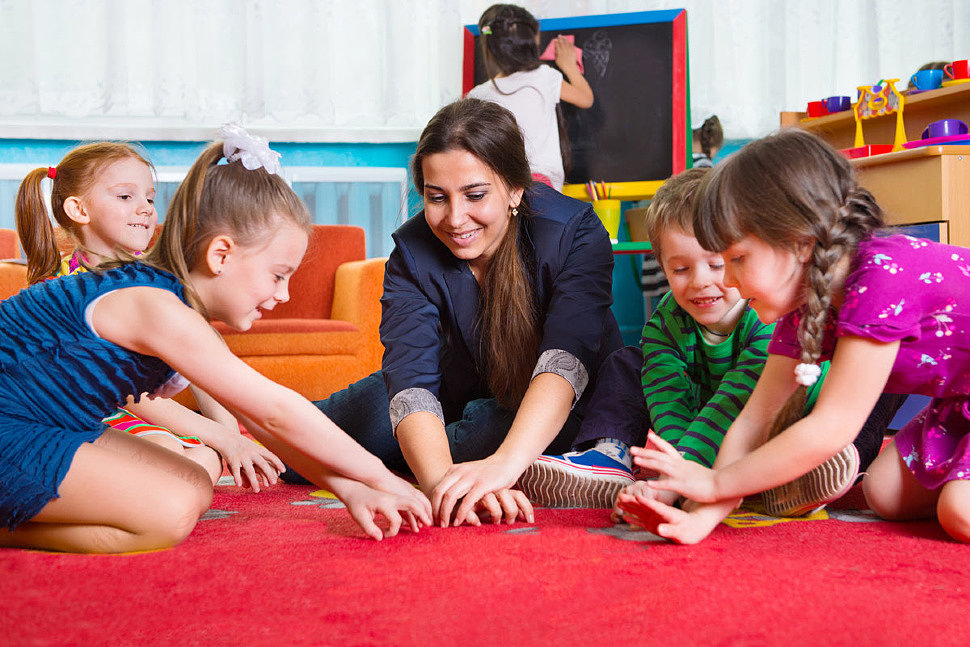
Learn more: Sparkling Buds
23. DIY Bucket Ball
This fun outdoor game requires only a few plastic buckets that can be played with beanballs or bouncy balls. Every time a player gets a ball into a bucket, they get to take that bucket away. The first player with no buckets wins the game.
Learn more: Play at Home Mom LLC
24. Learn About Color Mixing
This color mixing activity is an excellent way to learn about color theory and primary and secondary colors while giving learners an opportunity to create their own unique color mixtures.
Learn more: No Time for Flashcards
25. Make a Printable Five Senses Book
Students can assemble this predictable sight word book themselves, motivating them to read, write and learn about the world through their senses.
Learn more: Still Playing School
Related posts:
Category: Classroom Ideas
23 fun games for 5-year-olds
Playing is how children learn about the world around them, games are an essential part of any child’s education — even if they seem like nothing more than a fun way to spend time with siblings and friends. The next time kids are bored or have friends over to play, break out one of these 23 fun games for 5-year-olds. Watch how much fun they can have learning and playing at the same time.
The next time kids are bored or have friends over to play, break out one of these 23 fun games for 5-year-olds. Watch how much fun they can have learning and playing at the same time.
Board games for 5-year-olds
1. Feed the WoozleImage via Kohl’sWhen playing Feed the Woozle, children feed the Woozle a variety of yucky snacks. Throughout the three levels, children use their fine motor skills and learn how to cooperate with other players.
Where to buy: Feed the Woozle ($22, Kohl’s)
2. Scrabble JuniorImage via WalmartOne side of the Scrabble Junior game board calls for kids to recognize and match letters to spell predetermined words while the other side encourages them to spell simple words on their own.
Where to buy: Scrabble Junior ($15, Walmart)
3. Candy LandImage via AmazonThis board game teaches kids how to take turns and deal with potentially disappointing setbacks, such as drawing the gingerbread boy card.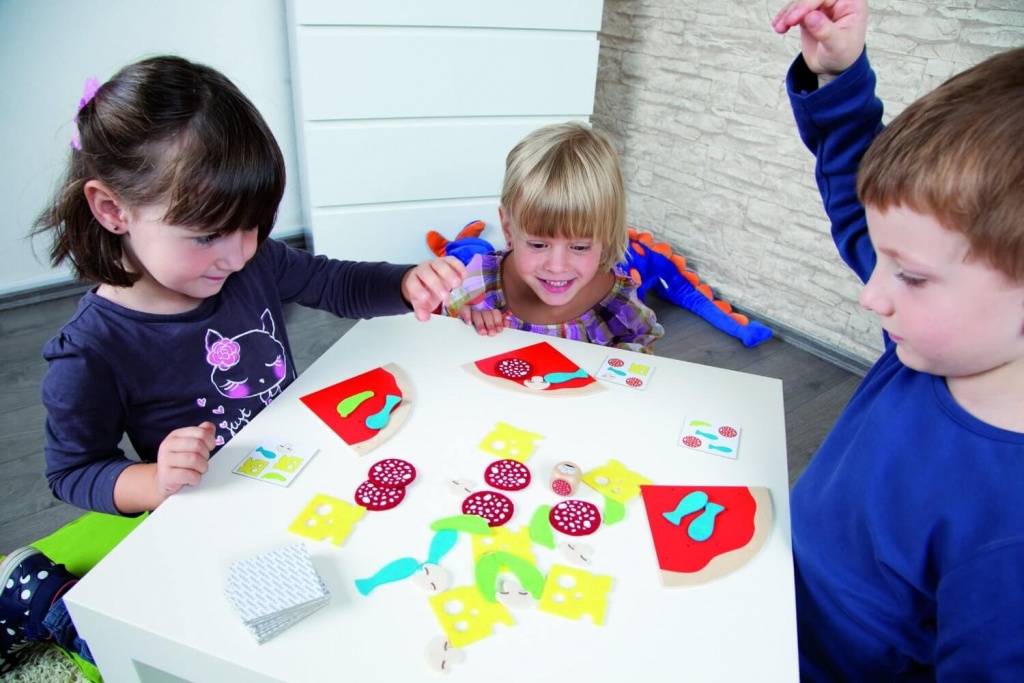 Candy Land also allows your 5-year-old to practice counting and identifying colors.
Candy Land also allows your 5-year-old to practice counting and identifying colors.
Where to buy: Candy Land ($12, Amazon)
4. ZingoImage via AmazonInspired by Bingo, Zingo teaches children vocabulary, matching, cooperation, memory and concentration skills.
Where to buy: Zingo ($21, Amazon)
5. HoppersImage via AmazonIn the peg solitaire game Hoppers, children age 5 and up will strengthen sequential reasoning skills through fun gameplay and a number of multilevel challenges.
Where to buy: Hoppers ($15, Amazon)
6. The Ladybug GameImage via AmazonThe Ladybug Game, an award-winning interactive game, requires players to feed ants, escape aphids and praying mantis and help get ladybug home safely, all while learning some basic math concepts.
Where to buy: Zobmondo!! The Ladybug Game ($25, Amazon)
Physical games for 5-year-olds
7. Found It! Image via Amazon
Found It! Image via AmazonThis Found It! indoor scavenger hunt game gets players up, active and running around even when you’re stuck inside. They make other versions of this game for outdoors and travel fun too!
Where to buy: Skillmatics Found It! (Indoor Edition) ($15, Amazon)
8. Wiggle & GiggleImage via WalmartPlayers must follow the directions to complete a series of active and balancing moves without dropping a game ball in Wiggle & Giggle.
Where to buy: Wiggle & Giggle ($17, Walmart)
9. Beanbag tossImage via LakeshoreYou can purchase a beanbag toss game or cornhole set, but you can also make one yourself! Check out this DIY beanbag toss game from Crafty Carnival. All you have to do is paint images on cardboard and cut openings in strategic spots. Then, assign points for each opening and equip kids with beanbags for competing.
Where to buy: Beanbag Board ($100, Lakeshore)
10. Dodge TagImage via Target
Dodge TagImage via TargetIn Dodge Tag, inspired by dodgeball but with safety in mind, children wear vests with “sticky” targets on them. Players get active throwing soft balls at each other in an effort to try and get them to stick to their opponent’s vest.
Where to buy: Diggin Dodge Tag ($24, Target)
DIY games for 5-year-olds
11. Tic-tac-toeCreate your own tic-tac-toe set using rocks, paint and paper straws or wood dowels! Jodie and Jen have full how-to instructions for a DIY tic-tac-toe set on Eighteen25.
12. Milk Jug CatchCut the bottom off a few plastic gallon milk jugs and line the cut with masking or painter’s tape, per the DIY instructions on Handy With Scissors. Grab some balls or bean bags, and kids have a fun game of catch.
13. Glow-in-the-dark ring tossImage via Oriental TradingTurn a simple pack of glow-in-the dark necklaces into a very cool game of glow-in-the-dark ring toss.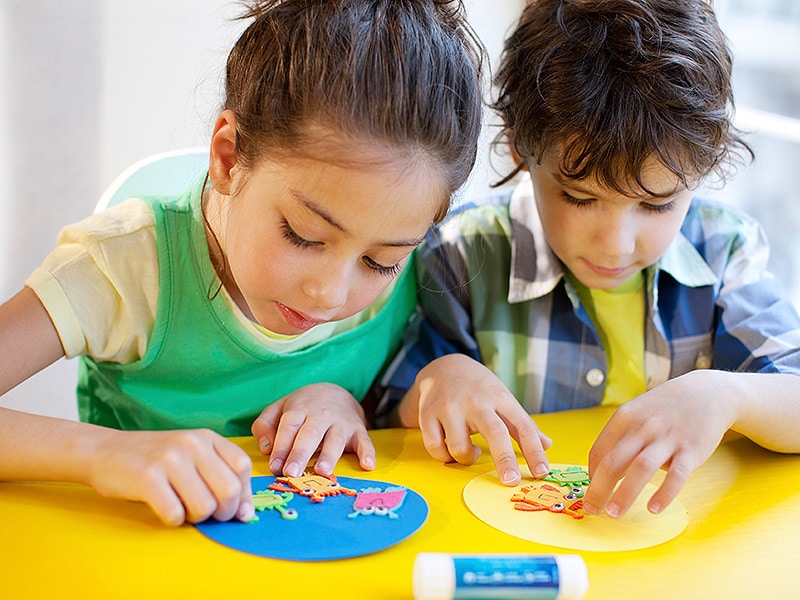 Press a dowel into the ground and let kids play the classic game of ring toss using glow-in-the-dark necklaces. Here’s how Heather at Passion for Savings DIY’d glow-in-the-dark ring toss.
Press a dowel into the ground and let kids play the classic game of ring toss using glow-in-the-dark necklaces. Here’s how Heather at Passion for Savings DIY’d glow-in-the-dark ring toss.
Where to buy: Glow Necklace Party Pack – 12 Pc. ($8, Oriental Trading)
14. Velcro catch ballTurn peel-and-stick Velcro, a small wiffle ball and some cheap cotton mittens into an awesome DIY Velcro catch ball game via Makezine. Now you have a very fun game of catch even for the littlest kids.
15. Knock the cansPeel the labels off of clean tin cans, decorate them with stickers and then line them up. The objective of the game is to try to knock down as many cans as possible, using a beanbag or soft ball. You can find free printable can wraps on Paging Supermom.
Indoor games for 5-year-olds
16. Monkeying AroundImage via AmazonMonkeying Around is a balancing game that requires children to hang monkeys from a tree, which encourages them to use patience and hand-eye coordination.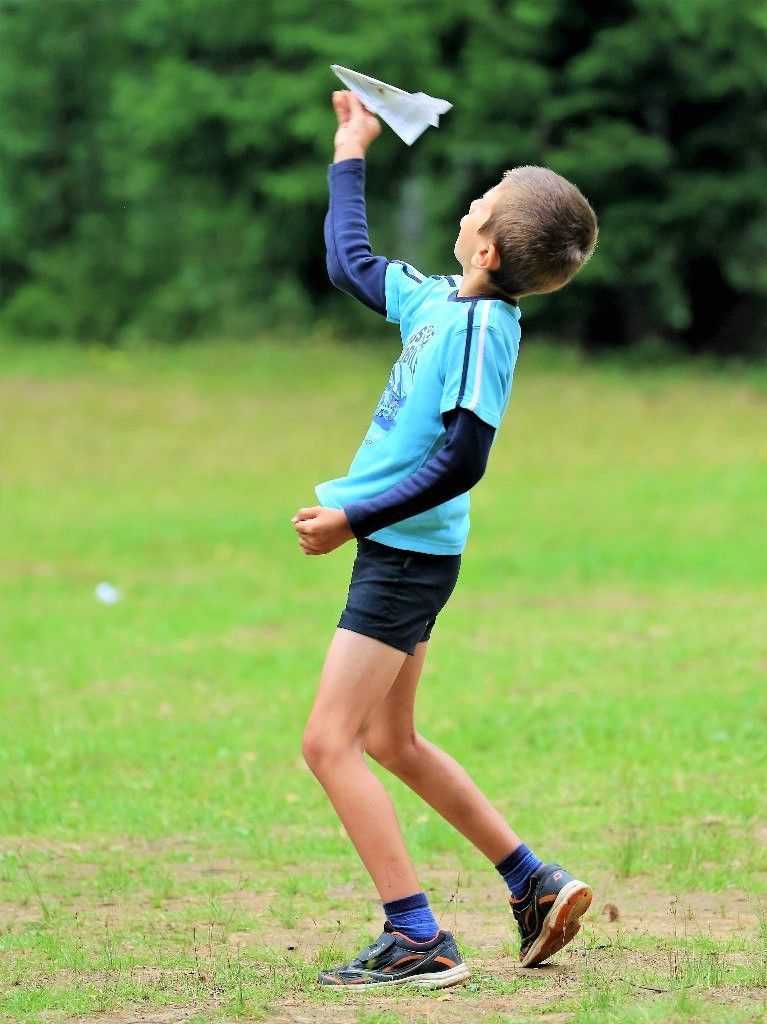
Where to buy: Monkeying Around ($15, Amazon)
17. Race to Lose a ToothIn this race to lose a tooth counting game from Toddler Approved, children line up marshmallow “teeth” in a pink paper “mouth,” roll a die and remove the corresponding number of marshmallows from their mouth. The first player to “lose” all their teeth wins.
18. Ice Cream TowerImage via AmazonPlayers use stacking, balancing and problem-solving skills to load scoops and scoops of “ice cream” in the Ice Cream Tower game.
Where to buy: Ice Cream Tower ($14, Amazon)
19. Animal charadesCharades is a great game for budding 5-year-olds to practicing using their imaginations and problem-solving skills. Cut out pictures of animals — or use the free animal charades printables from Buggy and Buddy — and split players into two teams. Players can take turns choosing an animal and acting it out within a two-minute time limit.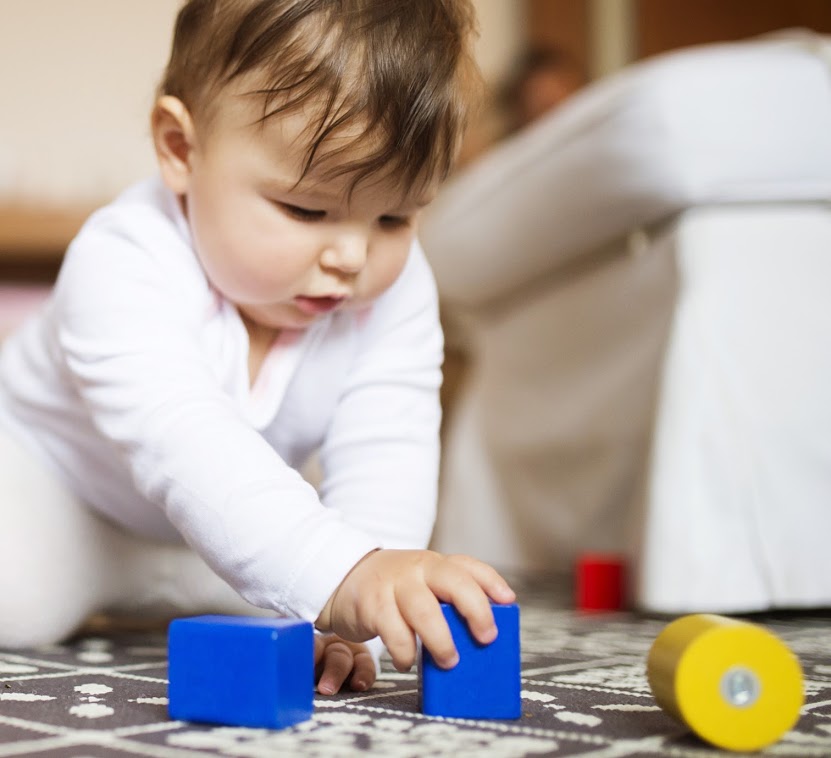 If the player’s team guesses correctly, they earn a point.
If the player’s team guesses correctly, they earn a point.
Educational games for 5-year-olds
20. Silent Skittles or M&Ms gameLooking for an option for a quieter game time? Try this silent Skittles or M&M’s game from Pint-Sized Treasures. Each candy color is assigned a point value, and — eyes closed! — teams take turns taking a single candy from the bowl. The team that has the most points when all the candy is gone wins.
21. Crazy CerealImage via CM School SupplyIn Crazy Cereal, children practice color matching by scooping pieces of “cereal.”
Where to buy: Crazy Cereal ($24, CM School Supply)
22. Trampoline alphabet gamesImage via Hands On as We GrowCheck out these brilliant trampoline learning games that help kids recognize the letters in the alphabet while getting them active, too. The folks at Hands On as We Grow offer several ideas for combining trampoline fun with learning — all you need is sidewalk chalk and a trampoline.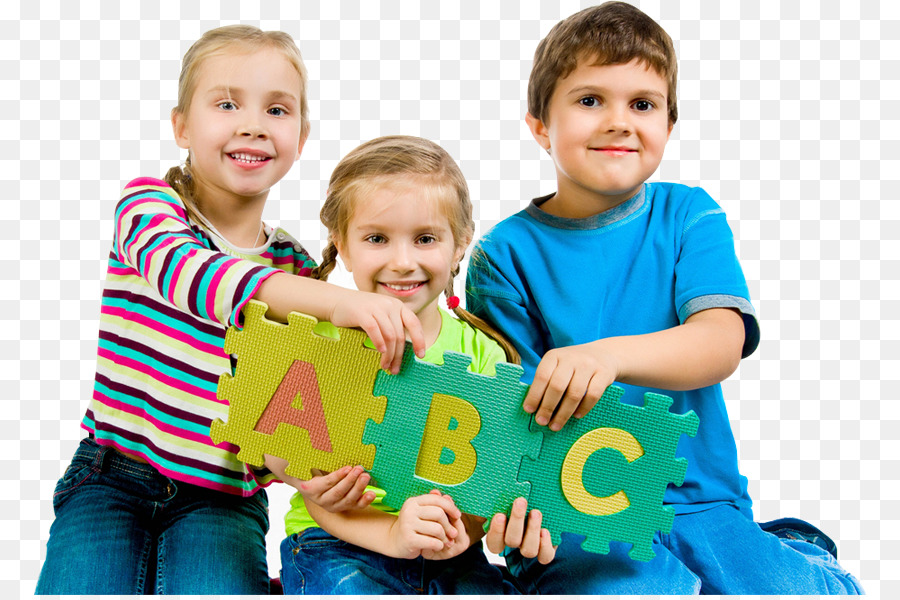
The cards in Alphabet Memory represent different letters of the alphabet. Kids get to learn and practice recognizing letters, making letter sounds, differentiating between upper- and lower-case letters and matching.
Where to buy: Alphabet Memory ($12, Rainbow Resource Center)
30 educational and entertaining games
Every mother of a five-year-old often feels the same as the heroine of the cartoon "Go Monkeys!". Preschoolers simply have inexhaustible reserves of energy that need to be directed in the right direction. As the well-known song rightly says, every small child must “run and jump, grab everything, kick with his feet, otherwise he will explode: bang bang - and he’s gone.” Therefore, we suggest that parents study games with a child of 5 years old - firstly, the baby will be busy with work, and secondly, it is in the process of playing that children develop and learn something new. In addition, joint classes contribute to the creation of close contact between parents and children. Time spent together is the best gift you can give your child.
In addition, joint classes contribute to the creation of close contact between parents and children. Time spent together is the best gift you can give your child.
What kind of games for a child of 5 years to choose? If your kid is active and regularly puts the whole house on his ears, then dance or sports games will come to the rescue. Does your five-year-old like to sing, dance, and put on home theater performances? Here you need fun that will help develop creativity. Diligent kids who love to think, read, learn, intellectual entertainment (for example, board games, games in English, psychological games, etc.)
Kidpassage will tell you what games with children aged 5 should be adopted by parents. With our tips, every adult can easily entertain a bored child, teach him something new and just have fun together.
Contents
- Games with a 5-year-old child at home together
- Games for children 5 years old at home
- Didactic games
- Music games
- Board games
- Games for a group of children aged 5
- Logic games
- Educational games
- Math games
- Christmas games
- Speech therapy games
- Attention games
- Role play
- Outdoor games for children 5 years old
Games with a 5-year-old child at home together
You don't need a big company to have fun.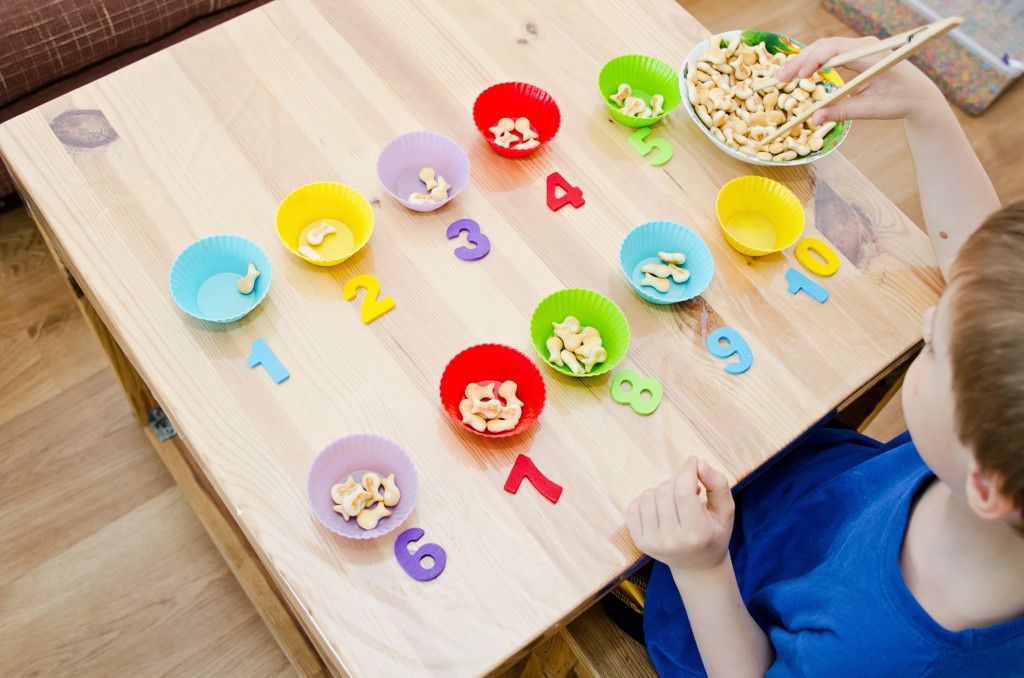 There are many educational and interesting games for two. It can be a game of a mother with a child of 5 years old or joint activities of two children.
There are many educational and interesting games for two. It can be a game of a mother with a child of 5 years old or joint activities of two children.
Quiet games for two - checkers, chess, Sea Battle, Tic-Tac-Toe and more. However, it is recommended to alternate calm and active games, because children cannot sit still for a long time, they definitely need to move around, throw out excess energy.
1. "Fish, birds, animals"
Props : rubber ball.
This is a game that is very similar to "Edible - Inedible", but in a newer, unhackneyed interpretation. The leader throws the ball to the participant and says one word: “fish”, “birds” or “animals”. The participant must answer the corresponding name of the representative of the fauna. So, the leader says “fish”, the participant answers “pike” and returns the ball.
2. "Sumo Tournament"
Props : two large home t-shirts, rope, two pillows, two straps.
This game is suitable for two children of about the same age. A rope is made into a circle, and with the help of pillows, straps and T-shirts, children turn into sumo wrestlers. The task of young sumo wrestlers is to push the enemy out of the circle.
Interesting games for two at home are easy to come up with on your own: it can be tug of war, and basketball with a wastebasket and hand-made balls from A4 sheets, and entertainment with dressing up, and dancing.
Games for children 5 years old at home
Parents often have a question about what to do with their child at home. Bad weather on the street, holidays at school or quarantine in kindergarten - and now the baby is already bored in the apartment or entertains himself with gadgets. However, as soon as parents turn on their imagination and involve the child in the gameplay, boredom disappears instantly! Sofa cushions and blankets turn into a fairy-tale palace, a mop becomes a knight's sword, and a domestic cat becomes a fire-breathing dragon. After a while, the laundry basket already turns into a basketball basket, and an old T-shirt stuffed with padding polyester into a soft ball, safe for mirrors and furniture. What to do at home with a child of 5 years old is not a problem for creative moms and dads!
After a while, the laundry basket already turns into a basketball basket, and an old T-shirt stuffed with padding polyester into a soft ball, safe for mirrors and furniture. What to do at home with a child of 5 years old is not a problem for creative moms and dads!
3. "Border on the castle"
Props : blanket, soft toys.
The room should be divided into two parts with a blanket - the "border". On one side is the child, on the other is the parent. Each participant in the game has the same number of toys. On command, the players must transfer as many of their "shells" as possible to the side of the enemy.
Important: use only soft toys (hollow rubber balls, balloons) to avoid injury, damage to furniture and mirrors in the house.
4. "New life of old objects"
Props : box or bag with various household items.
Various items are placed in the box: cubes, a broom, kitchen utensils, pens and pencils.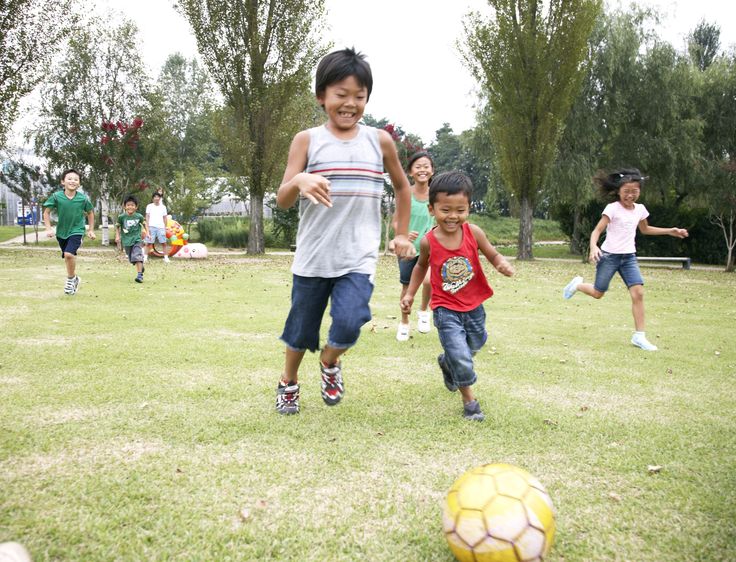 The child pulls out one item at a time and, together with his parents, comes up with how it can be used again. So, a broom can turn into a bouquet if you decorate it with beads and ribbons, and pots make good helmets for motorcycle racing.
The child pulls out one item at a time and, together with his parents, comes up with how it can be used again. So, a broom can turn into a bouquet if you decorate it with beads and ribbons, and pots make good helmets for motorcycle racing.
Didactic games
Didactic or educational games are the main tool for kindergarten and primary school teachers, but parents can also use educational games to not only have fun, but also spend time with their children in a useful way.
As a rule, educational games involve the use of various visual materials. These can be story cards, cubes with letters, numbers or image fragments, cards and much more.
5. "Detective and robbers"
One of the participants is assigned as a robber who needs to hide from the detective. The host should come up with some kind of detective story in advance. In order for the robber not to be seen through, he needs to properly disguise himself. The rogue leaves the room and changes something about his appearance, and investigators need to notice and point out these changes.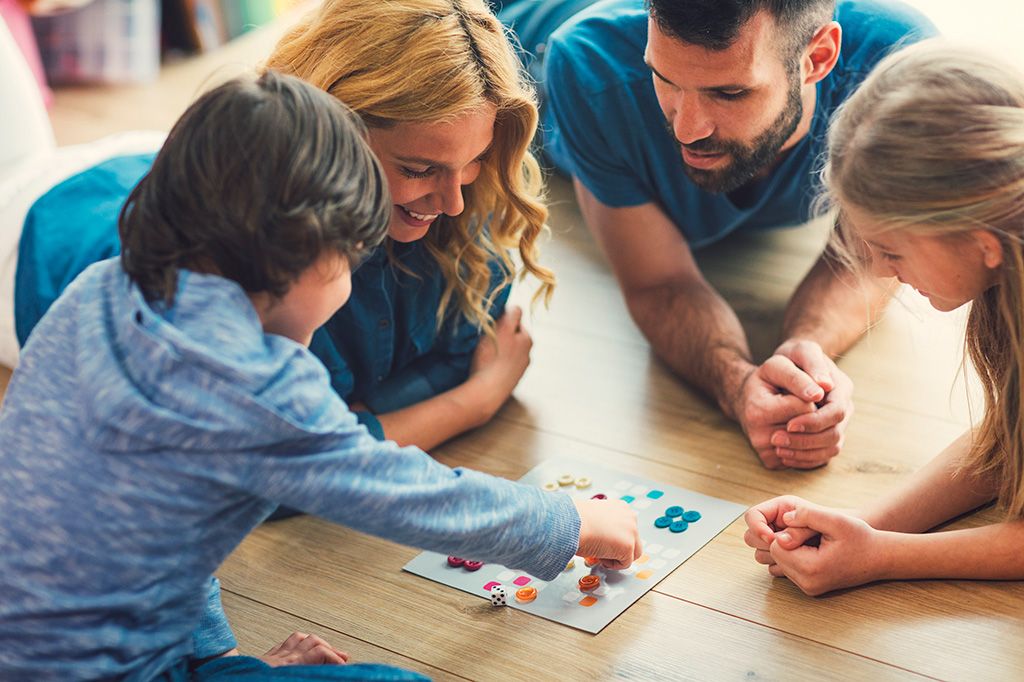 The game perfectly develops imagination, associative thinking and memory.
The game perfectly develops imagination, associative thinking and memory.
6. “True or False”
The facilitator names different facts, some of them are true, some are not. If the children hear the truth, they clap their hands; if they hear a lie, they stomp their feet. To make it more interesting, facts can be thought up in poetic form, for example:
- Daisies bloom in the garden in winter ( not true ),
- The iron will iron your shirts ( true),
- In winter, hares have black fur ( not true ),
- The lion in Africa is the most cowardly of all ( not true ).
Music games
This category includes two types of entertainment - dance games and singing. Musical games are good because they allow you to reveal the creative abilities of the baby, as well as spend extra energy. Every hyperactive child will appreciate the fun, where you can dance to your heart's content.
7. “Invented song”
Props : task cards, backing tracks of various melodies.
Singing is a great way to cheer up, especially if you sing funny funny songs of your own composition. The child draws a card with a task written on it (“a song of a hungry wolf”, “a foreigner who does not speak Russian well”, “sad bells”, etc.). The task of the participant is to complete the task either to the backing track of a well-known melody, or a cappella, without musical accompaniment.
8. “Aram-zam-zam”
At the beginning of the game, the parent shows the movements:
- “aram-zam-am” – claps on the knees, three times, with repetition;
- "ghoul-ghoul-ghoul-ghoul" - rotations in front of the chest with arms bent at the elbows, clenched into a fist;
- "arafik-arafik" - leaning forward with arms crossed on the chest, first from left to right, then from right to left.
When the child remembers the movements, you can move on to the game.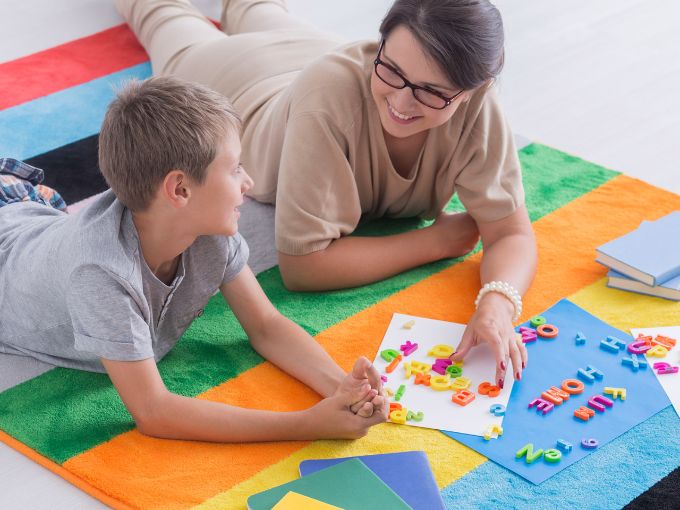 The essence of the game is to correctly repeat the dance when the song is turned on. The catch is that the tempo of the melody gets faster each time.
The essence of the game is to correctly repeat the dance when the song is turned on. The catch is that the tempo of the melody gets faster each time.
9. "Guess the performer"
Props : a record of songs performed by various cartoon or fairy-tale characters, and cards with images of these performers.
This game perfectly develops the musical memory of five-year-olds. The rules are quite simple: the parent plays a fragment of a song from the cartoon to the child, and the child must choose an artist card. You can complicate the task and take songs and characters that are not familiar to the young player so that he can guess the artist according to the meaning of the song. For example, include a fragment of the song "Chunga-Changa", which will correspond to a picture of funny little islanders. You can also let them listen to the line “And then my girlfriends are leeches and frogs,” and the child must guess that it is Vodyanoy who sings.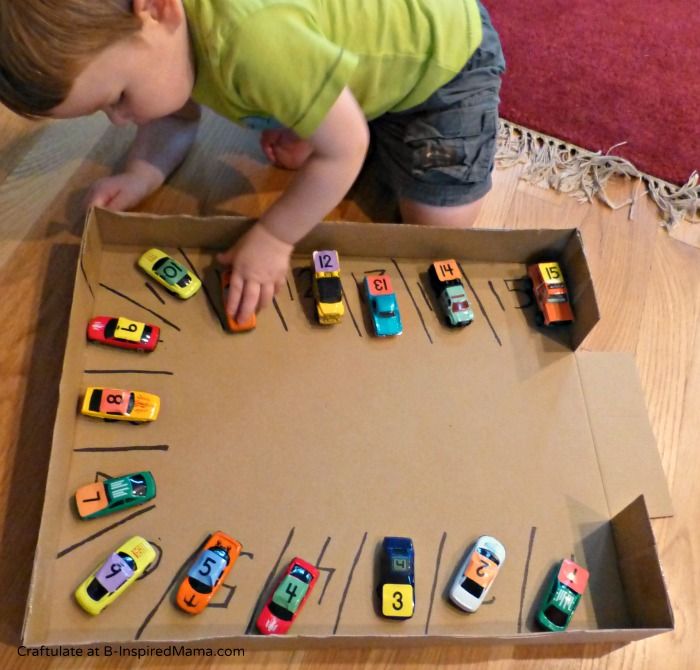
Board games
Properly selected board games may well replace full-fledged developmental activities. "Monopoly" will teach you how to count, "Erudite" (aka "Scrabble") - to compose and learn new words, "Alies" will pump up the acting abilities of children. First of all, board games help to improve mathematical skills, because in any game you need to keep track of moves and points earned. Not to mention that it is an excellent training of perseverance, thinking and attention.
Entertaining games in this category can be of different topics: about animals and plants, dinosaurs, fairy-tale worlds, connected with history or literature, etc. It is important to choose exactly the topic that the child is keenly interested in - then it will be much easier for him to learn the rules and join the gameplay.
Tables also come with cards, chips, dice, puzzles. The simplest ones are “walkers”, where you need to roll a die and move a chip on the playing field for the number of steps that have fallen out.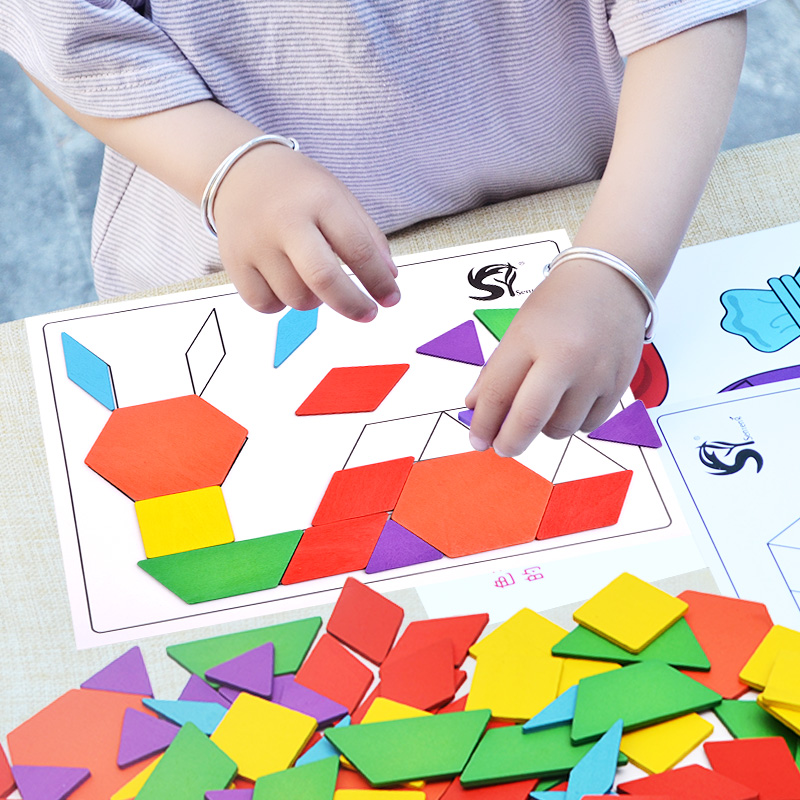 The most difficult type of board games are strategies, where you need to calculate your every move and think about what consequences it may have. Five-year-olds are also very fond of funny games, such as Twister.
The most difficult type of board games are strategies, where you need to calculate your every move and think about what consequences it may have. Five-year-olds are also very fond of funny games, such as Twister.
- DIY board games for children
10. "Puzzles"
Props : pre-prepared puzzle pieces.
You can buy a ready-made puzzle, but it's much more interesting to make it yourself. Parents together with their children can draw a picture on a sheet of cardboard, and then cut it into several parts, or approach the task more creatively and apply their own drawing: for example, on several ice cream sticks, pebbles, cotton pads, and so on.
11. "Flea"
Props : chips, coin.
This is a popular game played by our mothers and fathers, grandparents. On the edge of the chip, the role of which can be played by a small stone, bean / pea, the player presses with a coin, as a result of which the chip bounces like a flea. The essence of the game is that as many player's fleas as possible "jump" onto the opponent's playing field. The playing field can be made from a box of chocolates by dividing it in the middle with a straight line.
The essence of the game is that as many player's fleas as possible "jump" onto the opponent's playing field. The playing field can be made from a box of chocolates by dividing it in the middle with a straight line.
Games for a group of children aged 5
Playgrounds, playrooms or parties tend to be crowded with children who also need to be organized and offered fun activities. Group games can be sedentary (quizzes, riddles, puzzles) or active (relay races, races). All children will definitely enjoy an exciting quest, which combines the moment of an intellectual game - the search for clues and clues, and an element of activity, because, as a rule, you need to run for clues. Five-year-olds love to compete, so you can offer them team games on the score.
12. "Human knot"
Children hold hands and, at the command of the leader, begin to get tangled without disengaging their hands. After the “Stop” command, the leader must unravel this human knot without breaking the hands of the participants.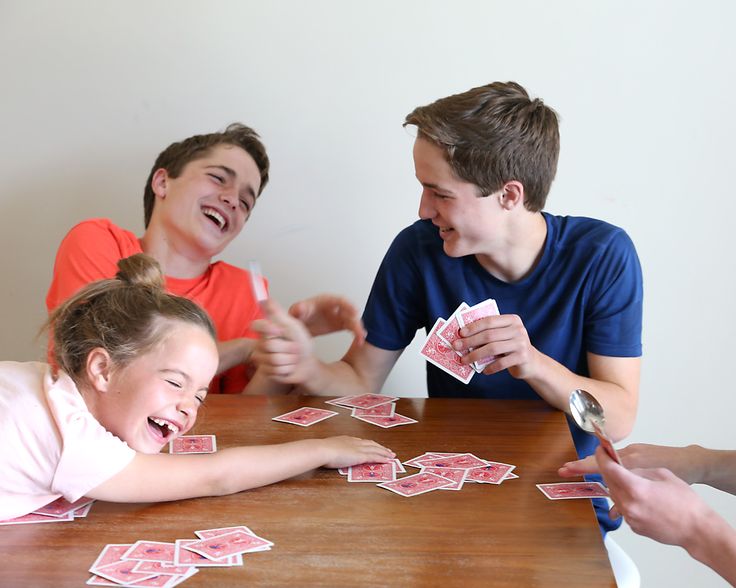 You can complicate the game and limit the time of unraveling. If the leader does not meet the deadline, then the children unhook their hands and rush in all directions, and the leader must catch one of the participants. Whoever falls into his hands becomes the new leader.
You can complicate the game and limit the time of unraveling. If the leader does not meet the deadline, then the children unhook their hands and rush in all directions, and the leader must catch one of the participants. Whoever falls into his hands becomes the new leader.
13. Centipedes
This is a fun game for a group of children. Participants line up and hold the one in front by the belt, thus forming a long centipede. At the command of the lead centipede, it must simultaneously perform the following tasks:
- raise the right paws;
- raise left legs;
- run in circles;
- move back;
- catch your tail;
- move forward by jumping.
In addition, you can arrange an obstacle course for the centipede or blindfold the “head” - the one in front.
Logic games
Games for the development of logical thinking are held in kindergarten and primary school, some tasks parents can take on board and deal with the child on their own.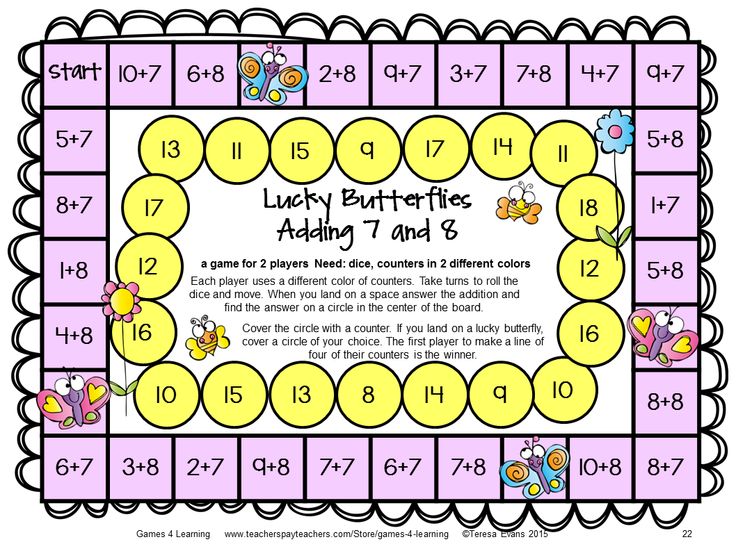 No kid is born with the ability to think logically, this is an exclusively acquired skill that must be developed from childhood. In this, the association game, puzzle, matching, quiz will help teachers and parents.
No kid is born with the ability to think logically, this is an exclusively acquired skill that must be developed from childhood. In this, the association game, puzzle, matching, quiz will help teachers and parents.
14. Trick problems
To solve trick problems, children need to be attentive and use their imagination. Such tasks also teach that sometimes you need to deviate from the usual algorithm in order to find the right solution.
Questions that can serve as an example of logical problems:
- What is impossible to eat for breakfast? (lunch or dinner).
- What is as big as an elephant but weighs nothing? (Shadow of an elephant).
- The girl dropped her ring into the coffee, but the jewelry remained dry. Why? (Coffee was not a drink, but was in beans or ground).
- What does half an apple look like most? (For the second half).
- What invention allows you to see through walls? (Window).
15. "Guess the object"
The host hides a small object in his fist.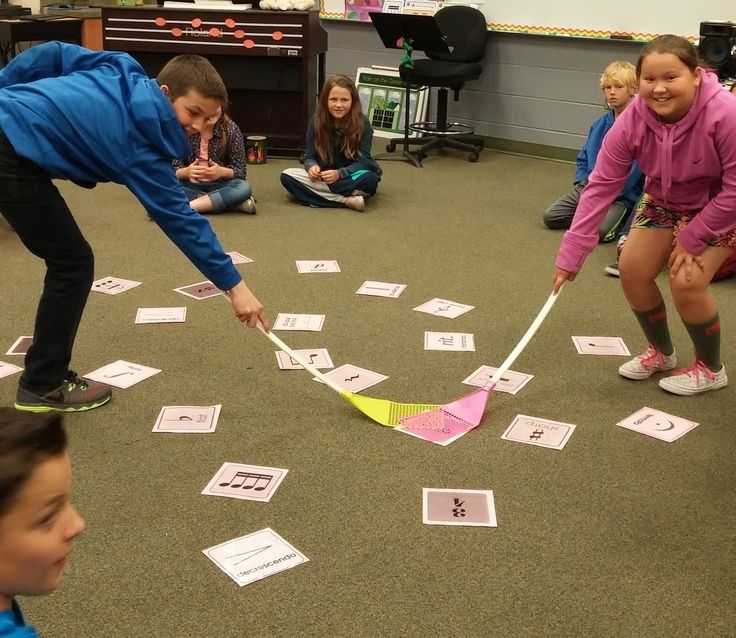 The child must guess what it is by asking leading questions that can only be answered with “yes” or “no”. For each correct answer, the leader extends one finger until the whole fist is opened, or the child can simply guess until the end, until the answers lead him to a clue.
The child must guess what it is by asking leading questions that can only be answered with “yes” or “no”. For each correct answer, the leader extends one finger until the whole fist is opened, or the child can simply guess until the end, until the answers lead him to a clue.
The same principle can be used to play theme games and guess, for example, animals, fairy-tale or cartoon characters, etc.
Educational games
The main goal of cognitive games is to teach a child something new, to expand his knowledge about the world around him, to replenish his vocabulary. These can be games about dinosaurs, space, the world around us, seasons and much more.
16. Orchard
Props : images of fruit and forest trees, cards with drawings of fruits.
The child needs to find exactly the trees that grow in the garden, and attach cards of the corresponding fruits to them. When choosing a tree, the child should pronounce its name and explain what helped him to recognize the tree (leaf shape, bark, fruits).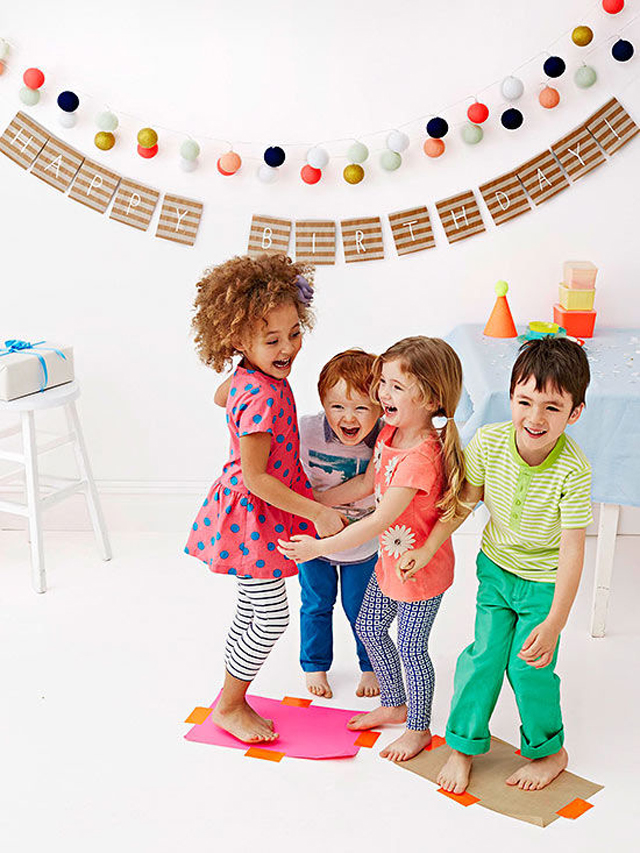 Parents should be told how fruit trees differ from forest trees, what fruits can be seen on certain types of trees, and so on.
Parents should be told how fruit trees differ from forest trees, what fruits can be seen on certain types of trees, and so on.
17. "Professions"
Children need to complete the poems:
The pilot lifts the blue sky... (airplane).
The roof is being painted before the children's eyes... (painters).
Every day a newspaper is brought to our house by... (postman).
I have been treating dolls since morning, today I… (nurse).
The facilitator should be told about each profession, you can ask the child what he knows about it.
Math games
Useful mathematical games will strengthen the knowledge of oral and written counting among five-year-olds. Such fun will be an excellent preparation for school.
18. "Missing number"
Requisite : cards with numbers from 0 to 9.
The leader lines up the numbers in a row, first hiding one or several. The task of the child is simple - to find out which numbers are missing in the digital series. You can lay out all the numbers correctly, then ask the child to turn away and remove one card or swap several cards.
The task of the child is simple - to find out which numbers are missing in the digital series. You can lay out all the numbers correctly, then ask the child to turn away and remove one card or swap several cards.
19. "Big construction site"
Props : 2-3 toy trucks, bricks, "Lego" and other "building materials".
Invite your child to play builders. The truck needs to take 12 cubes to the construction site. All of them will not fit into one car, the child needs to find a solution to the problem (use two cars, each of which will have six cubes; also ask the preschooler the question: “And if you take three cars, how many cubes will each of them have?”) .
In addition, you can perform various "building" tasks with the help of "Lego". For example, build a tower with seven blue blocks and three red blocks, then add three green blocks and subtract one blue block, etc.
New Year games
New Year is the favorite holiday of all children. Every year, kids look forward to decorating a beautiful Christmas tree, hanging an advent calendar on the wall and counting down the days until Santa Claus arrives. But it is the parents, and not the fabulous red-nosed Grandfather, who give children a magical holiday. To make the New Year fun and memorable, you should carefully choose options for entertainment. It is recommended to alternate active fun and games at the table, dance competitions and quizzes.
Every year, kids look forward to decorating a beautiful Christmas tree, hanging an advent calendar on the wall and counting down the days until Santa Claus arrives. But it is the parents, and not the fabulous red-nosed Grandfather, who give children a magical holiday. To make the New Year fun and memorable, you should carefully choose options for entertainment. It is recommended to alternate active fun and games at the table, dance competitions and quizzes.
- Children's Christmas games: how to have fun on the most magical night of the year
20. "Dress up the Christmas tree"
Props : bag, party paraphernalia, clothing elements, funny accessories.
For this game, you can divide into two teams, then there will be two "Christmas trees" that you need to dress up. One participant from each team is designated as a “Christmas tree”, all other players take turns blindly taking one item out of the bag and dress up their “New Year's beauty”.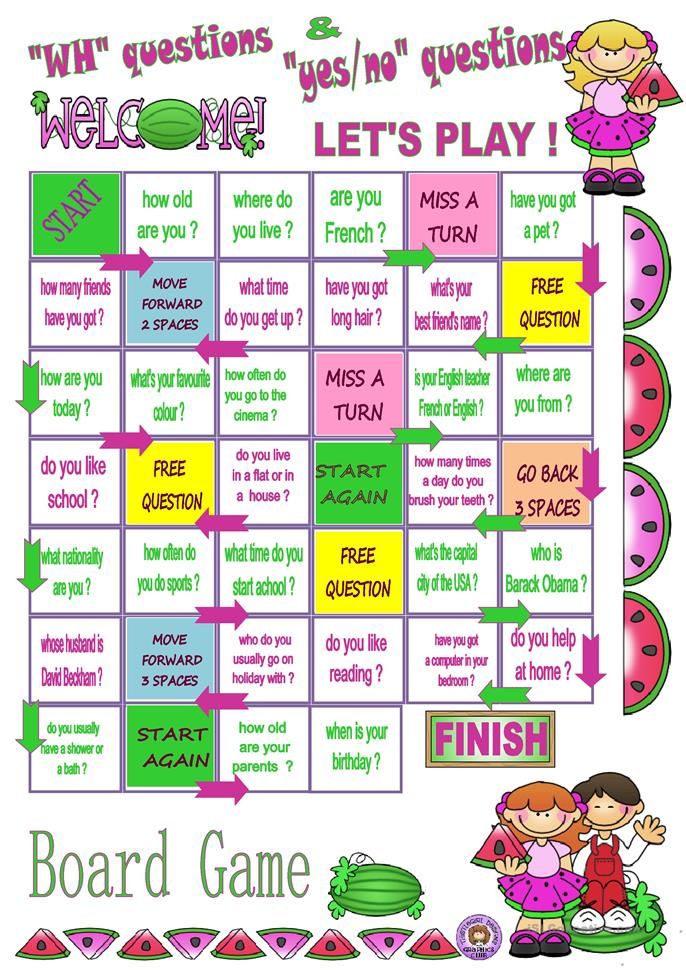
21. “Bring a snowball”
Props : cotton snowballs, spoons.
Guests are divided into two teams and lined up. Each first participant takes a spoon in his teeth, on which he puts a “snowball”. The player's task is to run to the Christmas tree and back as quickly as possible, without dropping his burden, and pass the baton to the next participant.
Speech therapy games
“No detectives. No giggles, but short and clear: fifks! - a phrase from the work of V. Dragunsky "Deniskin's story", which became an aphoristic joke. But in every joke, as you know, there is a fair amount of truth. Indeed, many preschool children have difficulty pronouncing certain letters, and in fact, beautiful clear speech is of great importance in adulthood. Parents can help their child practice pronunciation, but turn speech therapy exercises into an exciting pastime.
22. “Guess what sounds”
Phonemic games help preschoolers to distinguish sounds by ear and, as a result, pronounce them more correctly.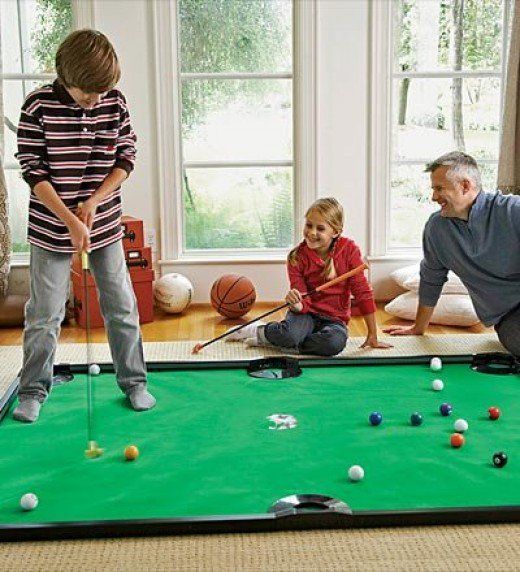 In addition, correct phonetic perception affects the level of understanding of what was said.
In addition, correct phonetic perception affects the level of understanding of what was said.
The simplest version of the phonemic game is to choose a few objects that make sounds (squeaker toy, tambourine, pot lids, etc.). The child closes his eyes, and the parent uses one of these items, after which the kid must guess it.
23. “Feed the kids”
Props : images of the faces of a boy and a girl with slits in place of the mouth, cards with images of products and other items.
Word games, as a rule, are aimed specifically at the development and correction of speech. The game "Feed the kids" also develops thinking. There are several options:
- The host calls the letter, and the child must “feed” the drawn boy and girl with food that begins with it (for example, the letter “P”, products: fish, rice, radish).
- The host says: "Feed Masha with bakery products, and Misha with meat products." The child chooses products and at the same time says: "Masha ate a sandwich, and Misha ate a barbecue.
 "
"
The facilitator can also name the products (you can come up with a small poem from the names of the dishes), and the child must determine by ear which of the named products are among the cards given to him.
24. Capricious doll
The game is aimed at developing speech, gives children an understanding of what antonyms and synonyms are. The host invites the children to play with a capricious doll, which does everything the other way around, and even teases. The host says: “Doll, go to sleep, it’s already night outside the window!”, And the child answers for the doll: “No, it’s day outside the window!”; presenter: "Cover, otherwise it's cold", puppet: "No, it's hot now!"
Attention games
Games like Spot the Differences, tasks where you need to remember the location of cards, search for errors and inconsistencies are excellent for developing attention.
25. "Strange Beasts"
The leader reads the story, the children listen attentively.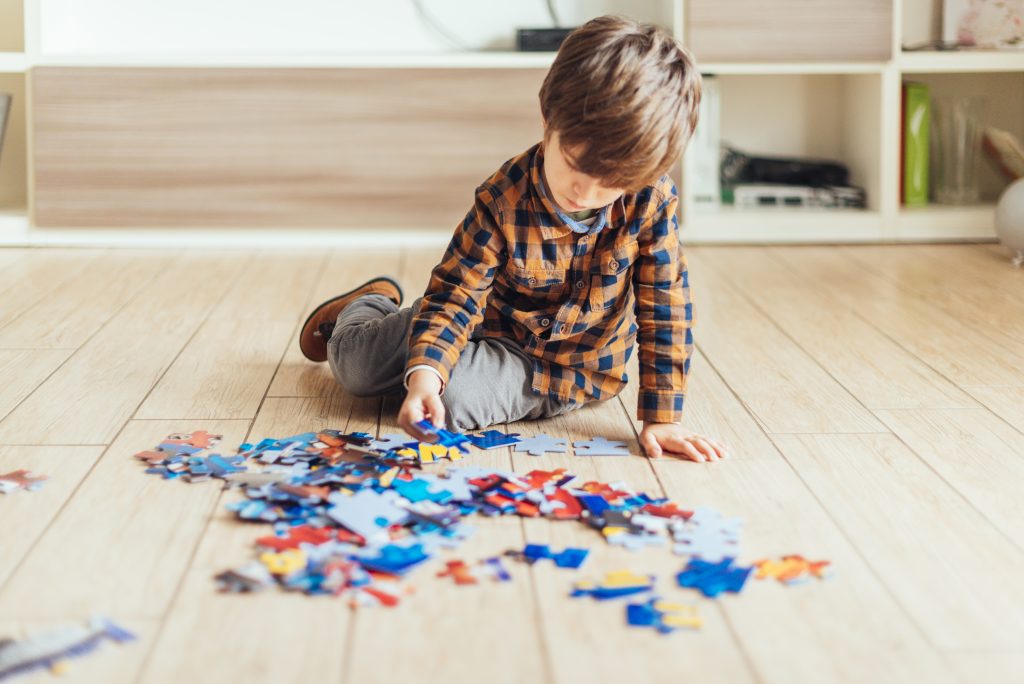 As soon as the child notices inaccuracies in the narration, he immediately claps his hands.
As soon as the child notices inaccuracies in the narration, he immediately claps his hands.
Example of a story:
Once in a hot winter, a hare with a long fluffy tail and short ears decided to build a hibernation den for himself. He began to dig a deep hole and frightened off a fox, which was just nesting in a tree. Suddenly, a blue wolf jumped out at the hare, but the hare was not at a loss and decided to swallow it, then he grunted in fright and disappeared into the forest thicket. Then the hare picked up spruce branches so that he could sleep softly on them in the den. And all around - beauty: flowers bloom, butterflies fly, berries ripen, in a word - winter!
26. "Repeat the route"
The child is blindfolded and guided along an easy route. The task of the participant is to repeat this path as accurately as possible. The facilitator can give verbal prompts: "Three steps forward, turn right, four steps forward, turn left, etc." In the future, the exercise is complicated by additional actions or obstacles.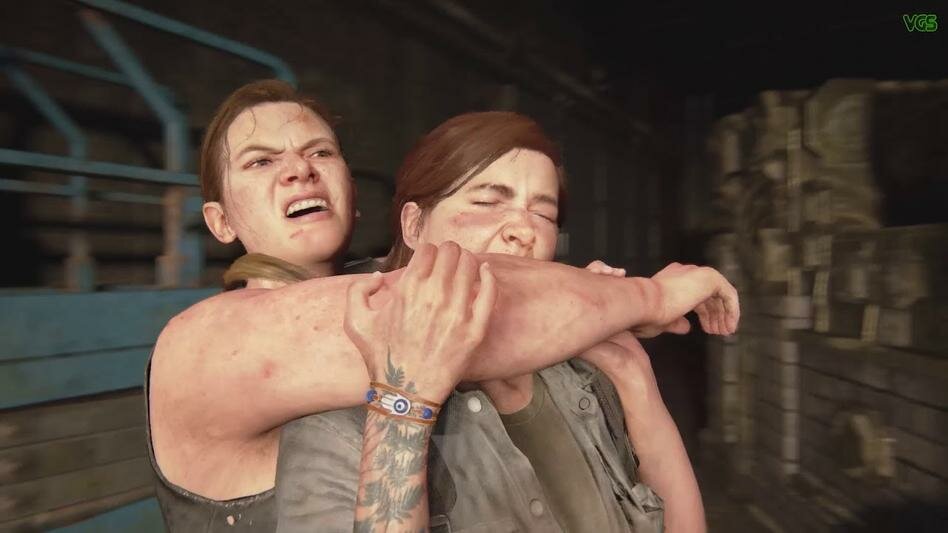 “Three steps forward, now step over the obstacle. One small step back, turn around and take two steps forward.” You can also give deceptive hints - for example, the leader says: "Turn right", although there were no turns on the route to be repeated. The child should not fall for this bait.
“Three steps forward, now step over the obstacle. One small step back, turn around and take two steps forward.” You can also give deceptive hints - for example, the leader says: "Turn right", although there were no turns on the route to be repeated. The child should not fall for this bait.
Role play
Story games are of great importance in the development of five-year-olds, because it is through the game that children learn to interact in society. “Mothers and Daughters” shows the traditional family model, the hospital game illustrates the relationship between the patient and the doctor, teaches the rules of behavior in the clinic, and the kindergarten game can tell parents a lot about what happens to the child in the kindergarten group.
What kind of theatrical games can be offered to a five-year-old? Lots of options!
27. "Bunny's Birthday"
Props : toys, dishes (toy or disposable).
Invite the child to imagine that the Bunny (or other toy) has a birthday today.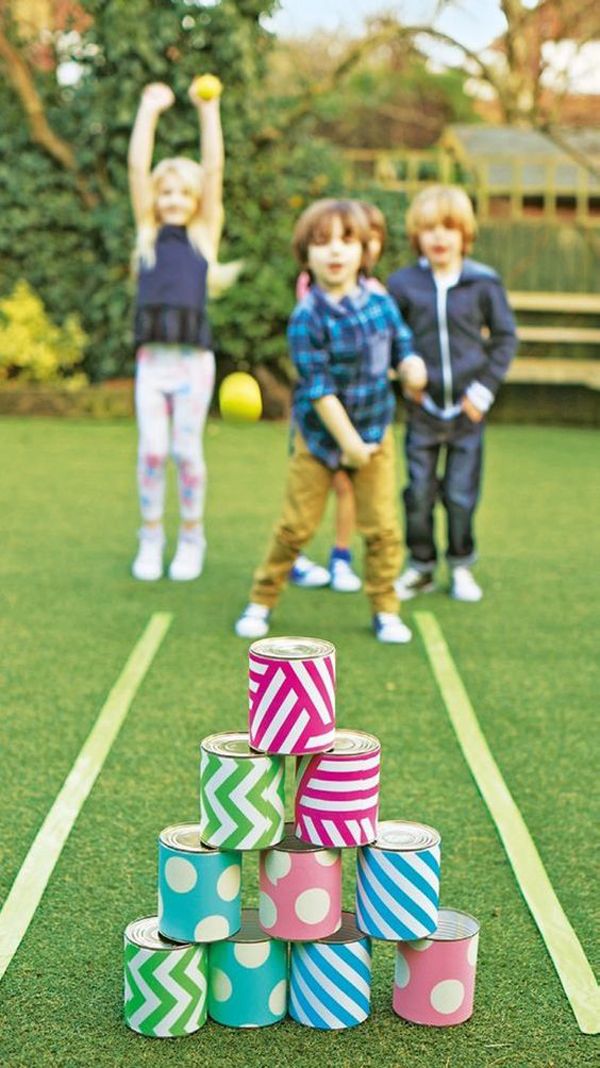 He invited his friends, and now Bunny needs to set a table for them. Guests also need to follow the rules of etiquette during the feast and prepare a gift and congratulations for Bunny.
He invited his friends, and now Bunny needs to set a table for them. Guests also need to follow the rules of etiquette during the feast and prepare a gift and congratulations for Bunny.
During this game, preschoolers will learn the rules of courtesy, learn how to behave at a party and set the table, as well as expand their vocabulary (“name day”, “serving”, “service”, “meal” and others).
28. "Flight into space"
Props : illustrations of our planet from space, other planets and celestial bodies.
Almost every preschooler would be happy with the idea of going on a space trip. But in order to become an astronaut, you need to undergo a medical examination, pass sports standards and learn many important points (what is gravity, how astronauts eat, etc.). During the "space flight" the parent or leader talks about the planets, celestial bodies, galaxies. It will be even more interesting if the astronauts meet with aliens - invite the child to establish contact with the inhabitants of Mars or Venus and tell them about the Earth.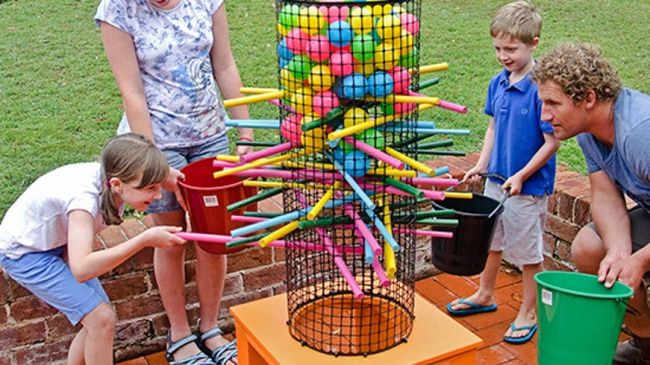
Outdoor games for children 5 years old
Every parent needs to know not only what to play at home with a 5-year-old child, but also how to entertain their child on the street. It is not enough just to bring the kids to the playground and leave them to themselves, you need to offer them examples of children's games, tell the rules and maybe even take part in children's fun.
Some children's games at the age of 5 are considered timeless classics and never go out of style. You can offer children entertainment from your childhood: "Classics", "Rezinochka", "Bouncer", "Hide and Seek", "Cossacks-robbers" and others. And you can also learn something new, parents are advised not to limit themselves to options from the past, but to regularly look for original ideas for games with a 5-year-old child.
- Children's outdoor play: 17 replacements for shooters, fighting games and arcades
29. “Flight of the owl”
Parent/facilitator – “owl”, child/children – “mice”.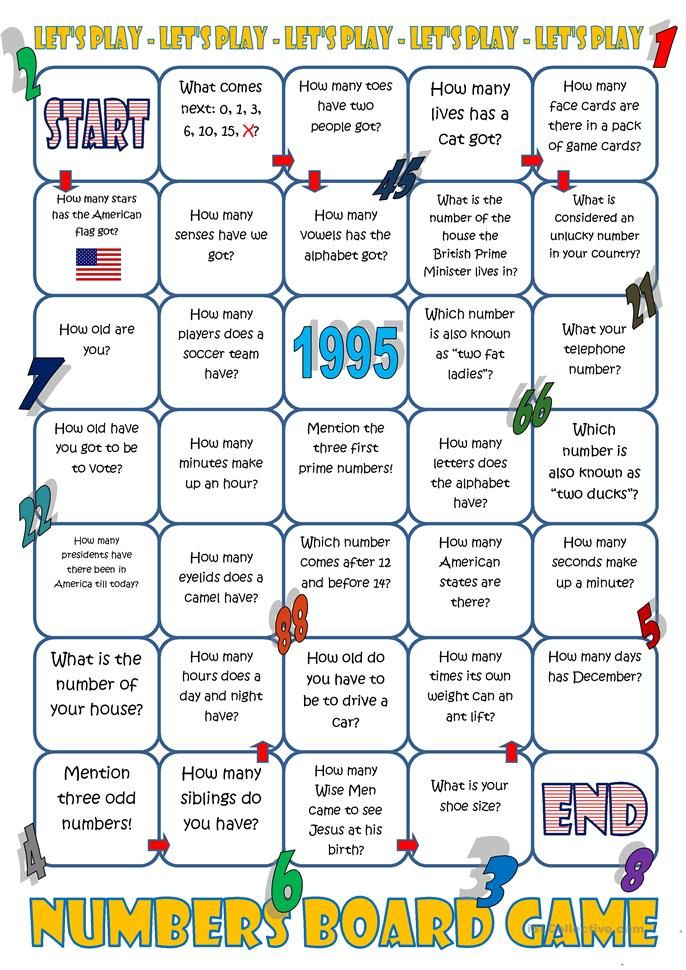 When the host says "Day", the mice run and frolic, but as soon as the command "Night" sounds, everyone should freeze in random poses. At night, an owl comes out to hunt, the task of mice is not to move or make any sounds. To make the game more interesting, the owl may try to make the frozen mice laugh.
When the host says "Day", the mice run and frolic, but as soon as the command "Night" sounds, everyone should freeze in random poses. At night, an owl comes out to hunt, the task of mice is not to move or make any sounds. To make the game more interesting, the owl may try to make the frozen mice laugh.
30. "Museum of wildlife"
Props : cards with the inscriptions "Grass", "Earth", "Tree", etc.
Invite the child to create a museum of wildlife and prepare interesting exhibits for this. The search for exhibits will be an exciting activity, during which the parent will tell the child a lot of interesting things about the world around them. When the exhibits are found, they need to be placed in the museum and put next to the corresponding card - this task is especially useful for five-year-olds, because usually at this age children learn to read.
Tips for parents: words should be written in large block letters.
You can also write them in certain colors: "Grass" - green, "Cone" - brown, "Sand" - yellow, etc.
It is difficult to think of a more natural activity for a child than play. It is through the game that the child develops, learns the world around him and learns to interact with it, reveals his creative abilities. In addition, joint games with a 5-year-old child help create a warm, friendly atmosphere in the family.
Time spent playing with a child is a huge contribution to a child's development. If you want to be a friend to your child and gain his boundless trust, then do not underestimate the value of joint games. For more ideas, check out KidPassage's article Playing with Kids at Home: 42 Fun Ideas. Have an interesting and exciting pastime!
Educational games for children aged 5-6 with parents at home
Games for preschool children are not just fun, but a necessity. Through the game, the child develops, the formation of his personality takes place.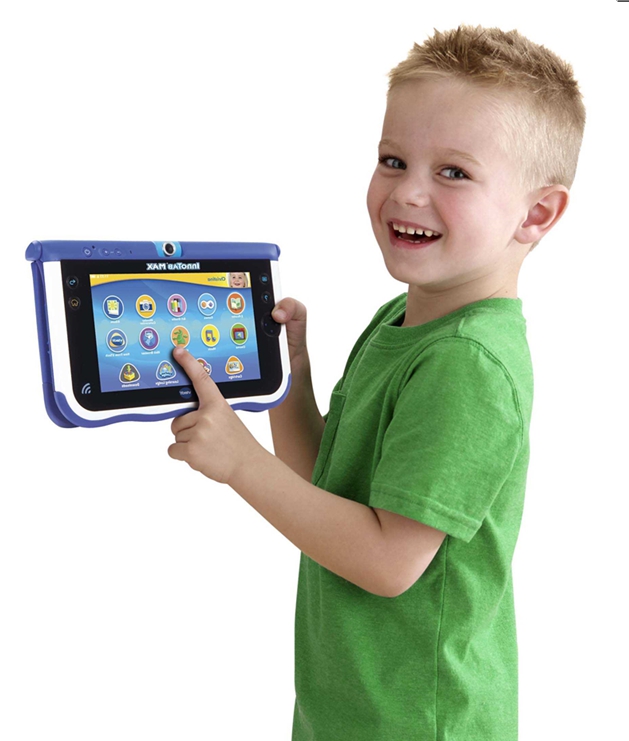 The game helps to master the rules, broaden your horizons, develop perseverance, train mindfulness. These qualities are necessary for an older preschool child, especially before entering school.
The game helps to master the rules, broaden your horizons, develop perseverance, train mindfulness. These qualities are necessary for an older preschool child, especially before entering school.
Any activity with a child must be age appropriate. In this article, we will consider which games are most suitable for children 5-6 years old, and we will understand their classification.
Article content:
- Outdoor games
- Board games
- Educational games
- Educational games
- Tips for parents
- Output
Outdoor games
Outdoor games for children are useful in that they develop reaction, dexterity, endurance, coordination of movements, and add extreme sports. For preschoolers 5-6 years old, an outdoor game lasts 20-25 minutes. This type of play allows children to throw out the energy that accumulates during the day.
In kindergartens, after an active daytime walk, children have no problems going to bed during the waking hours. This practice can be used at home when you want to put your baby to bed.
This practice can be used at home when you want to put your baby to bed.
- Giant Lilliputians. When an adult says "Lilliputians", the children squat as low as possible to the ground. Hearing the word "giants", they rise up on their toes and pull their hands high up. Make the task more difficult and intentionally confuse the child by naming the word and showing the wrong movement. Playing at a fast pace will encourage the baby to be more attentive and focused, as well as strengthen leg muscles.
- "Do the opposite." For six year olds, this game will be a real challenge to train their attention. An adult shows the movements, and the child must come up with a version in reverse. If the leader jumped, the participant of the game sits down. If the facilitator stretched his hands forward, the participant hides them, and so on.
- Dance Marathon. Host a dance marathon for the whole family. To do this, you need a good mood, incendiary music and at least 2 participants.
 To diversify the game, the adult stops the music, and the children freeze in the position in which they remain. Music games improve mood, relieve fatigue and strengthen the relationship between parent and child.
To diversify the game, the adult stops the music, and the children freeze in the position in which they remain. Music games improve mood, relieve fatigue and strengthen the relationship between parent and child.
Board games
For children aged 5-6, board games are an exciting activity. This type of game teaches the child to act according to the rules, to wait for his turn, to be able to negotiate. The desktops always have some paraphernalia that you can touch: cubes, puzzles, figures. Tactile contact with them develops not only curiosity, but also fine motor skills of the child.
There are board games that are more suitable for girls, for example with the heroines of fairy tales. It is also important to select desktops for boys taking into account their interests.
- Jenga. A popular game that develops fine motor skills. Suitable for adults and children. It is a set of wooden bars. The game begins with the construction of a tower of 3 bars, 3 more bars are placed on top, but in a different direction, and so on with the whole set.
 When the tower is built, the participants take out a block with one hand so that nothing collapses. The elongated block is placed on top of the tower. The one whose turn the tower collapses loses.
When the tower is built, the participants take out a block with one hand so that nothing collapses. The elongated block is placed on top of the tower. The one whose turn the tower collapses loses. - Monopoly. The game exists in various variations. Choose a children's monopoly for children from 5 years old. The number of participants is from 2 to 4 people. The main benefit of a monopoly is that it allows you to master the skills of the economy. All players pass the playing field in turn. The roll of the die determines how many steps the contestant must take. The winner is the one who achieves the bankruptcy of other players and becomes a monopolist.
Educational games
Adults should pay special attention to educational games. The child chooses those games that respond to him. Therefore, the parent manages the activities of his child, offers options for games that help develop.
Consider 2 variants of educational games for children.
For the development of intelligence
Logic games combine 2 important functions - entertainment and development. A child who often plays such games is distinguished by lively thinking, a broad outlook, curiosity and sociality.
Examples of mind games:
- Quizzes for which you need to compose questions and prepare prizes for correct answers. For a 5-year-old child, select questions on the topics of fairy tales (“Who left his grandmother and left his grandfather?”), Nature (“When the sun sets, is that called ...?”), Seasons (“What season comes after spring?” ). Ask children 6 years old to answer questions on the following topics: days of the week (“What day of the week follows Thursday?”), household items (“What device helps to count numbers?”), social world (“What do they call people who have a wedding?” ).
- Solving puzzles is a good way for the logical development of children 5-6 years old. It is necessary to teach the child to guess the encrypted word, starting from simple options.
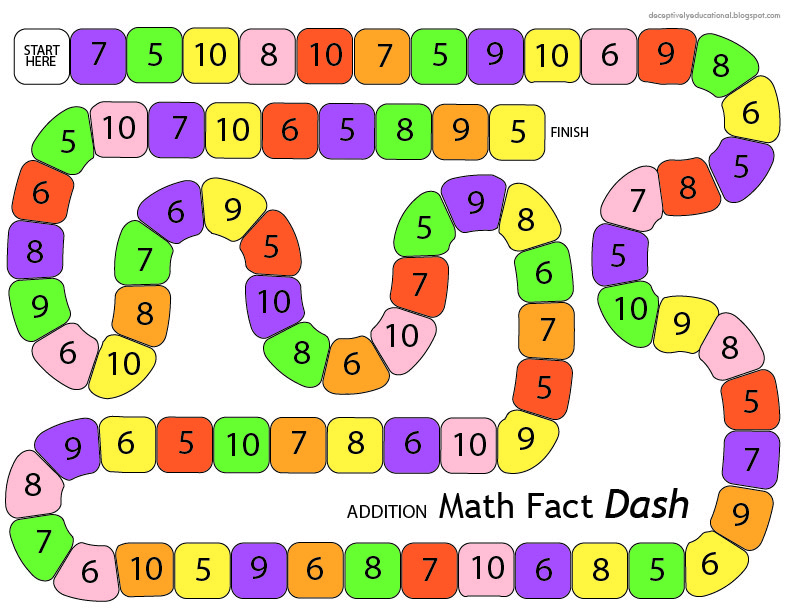 As soon as the baby learns the basics, complicate the puzzles, along the way explaining the new rules.
As soon as the baby learns the basics, complicate the puzzles, along the way explaining the new rules.
For the development of speech
Word games with children are very easy to organize at home. Clear and expressive speech, the ability to express one's thoughts will help the child quickly adapt to new conditions at school. Why it is so important to pay attention to the development of speech, read the article "How to teach a child to speak: ways, games and exercises."
Examples of what to play with a child to develop speech:
- “Choose a rhyme”. The adult calls the word, and the child comes up with rhymes. Write down all the rhymes and compose a poem with your child. The game allows you to replenish vocabulary and develops literary creativity.
- "Pick a word." The leader throws the ball and calls any part of speech (noun, verb). Participants choose the word that makes sense. For example, "ball" - "jumps", "beautiful" - "doll".

- "Choose an antonym." The facilitator calls the word and invites the participants to pick up the word in reverse, explaining that such words are called antonyms. The game expands vocabulary and reinforces the concepts of the Russian language.
Educational games
Educational games for children develop mental processes: memory, thinking, imagination. The purpose of the cognitive game is to teach the child the knowledge, skills, actions necessary for further development.
For learning to read and write
Learning to read and write begins with the child's introduction to letters and sounds. When a preschooler learns to hear individual sounds in a word, then he will be able to write. You can develop this skill with the help of games:
- “Name words starting with a letter…”: an adult calls a letter, and a child selects as many words as possible that begin with this letter. At the initial stage, use pictures with images of words to help.

- "Find the letter": an adult shows pictures with images of letters in different fonts and sizes. The child must find the letter that was asked. With the help of visual memory, a preschooler will remember what the letters look like and will be able to write them on their own.
Math
Math games help children aged 5-6 get ready for school. Introduction to mathematics begins with teaching numbers, counting, and then calculations. It will be easier for a child to master mathematical representations if you pick up entertaining games.
- "Geometric shapes". The game with a 5-year-old child is aimed at developing knowledge of geometric shapes that can be cut out of cardboard. The adult calls the figure, and the child chooses it among the other figures. At the end of the game, build a house or any other figure together.
- "Tell me, what number is missing?". A game for children who can consistently count up to 20.
 You must fill in the missing numbers that come before, between or after the given number.
You must fill in the missing numbers that come before, between or after the given number.
For teaching retelling
The ability to retell texts must be trained from preschool age. Do this while doing household chores. Let the child tell what happened in their favorite cartoon or book. To diversify children's activities, use games for five-year-olds and six-year-olds.
- Theater at Home. Choose a story that your child likes. Assign roles and arrange a theatrical performance. Children really like to try on the roles of their favorite characters, so remembering the script will not be difficult. Such an activity will teach the child not only to memorize and retell the text, but also to make the speech expressive.
- "Letter from a forest dweller". For five year olds, playing with an imaginary animal will be a fun way to imagine how this or that character feels. Prepare a set of pictures with a story, for example, how one day in the life of a hare goes.
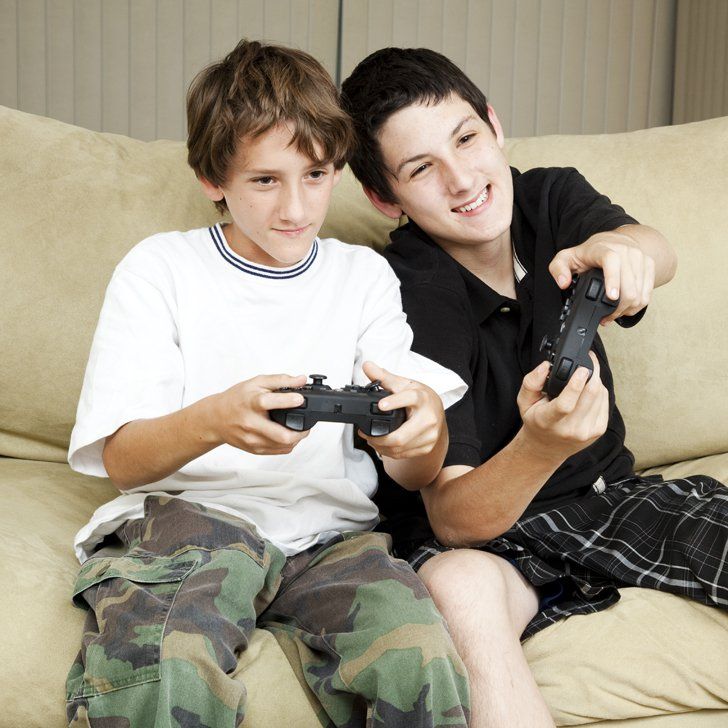 Invite your child to make up a story from the pictures or complete their own version.
Invite your child to make up a story from the pictures or complete their own version.
Tips for parents
- Discuss the rules before you start playing games.
- To avoid injury during outdoor play, instruct and inspect the play area for safety.
- Games with children 5-6 years old form behavior patterns, so choose useful options.
- Use every opportunity for the development of the child: at home, on a walk, in developing circles.
- Sincerely rejoice in the victories of the baby and do not focus on failures. Parental support is important for a child's development.
Read also: what a child of 5 and 6 years old should know and be able to do.
Conclusion
Playing with a child at home is a great pastime for adults and children. Unfortunately, there is not always time and opportunity to pay enough attention to this.